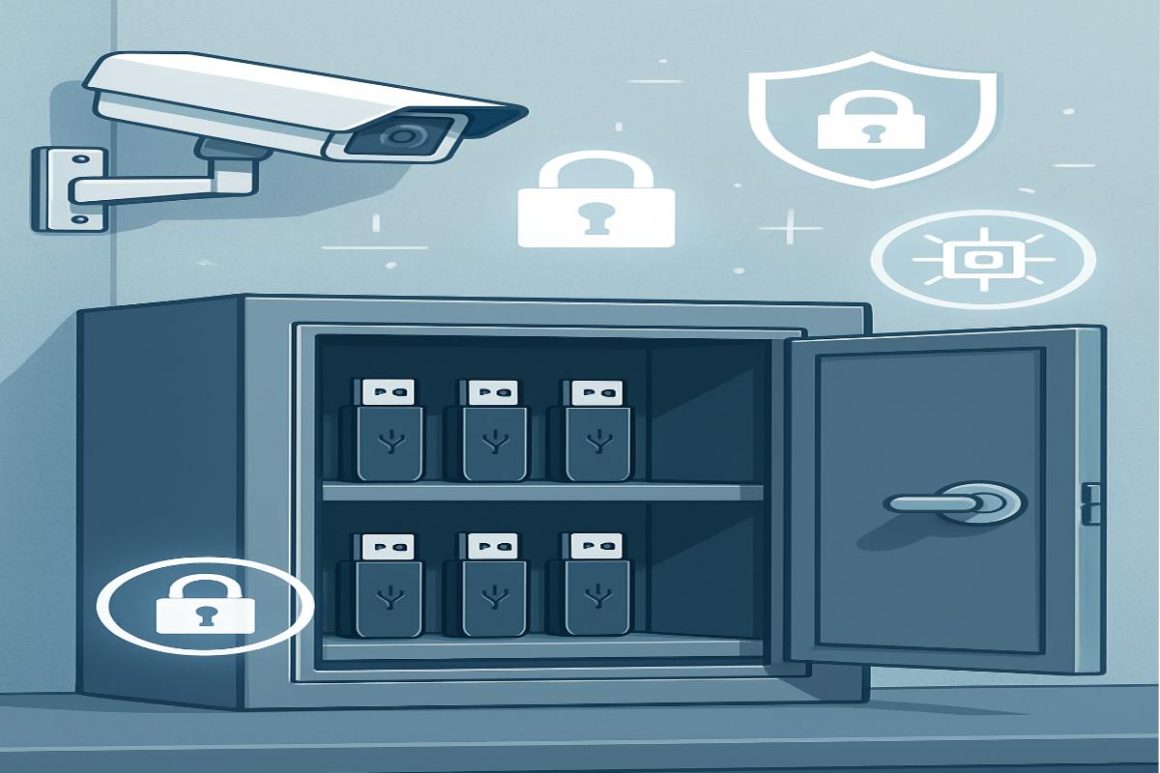Government-owned removable media should be stored using robust security measures to protect sensitive information from unauthorized access, loss, or cyber threats. The key practices include secure physical storage, data encryption, access controls, labeling, inventory management, and environmental protections.
Table of Contents
Secure Storage Locations
Government removable media must be kept in locked, access-controlled environments such as safes, secure cabinets, or restricted rooms within government facilities. Access should be limited strictly to authorized personnel through security measures like badge or biometric access and surveillance systems to prevent theft or tampering.
Encryption and Labeling
All removable media should be encrypted using strong standards such as AES-256 to ensure data remains unreadable if devices are lost or stolen. Devices must be clearly labeled with classification levels (e.g., Confidential, Secret) and appropriate handling instructions. Reducing the chance of accidental misuse or mishandling.
Access Control and Audit Logs
Access to government-owned removable media should be strictly limited to individuals with a legitimate need. Agencies should use role-based access controls and maintain detailed logs of who accesses or removes any media, as well as when and why. Regular audits help ensure accountability and quickly highlight any discrepancies or unauthorized use.
Inventory Management and Tamper Evident Measures
Every piece of removable media should be tracked in an official inventory. Recording unique device IDs, contents, custodians, and transaction histories. Using tamper-evident seals is also recommended; these provide a clear visual indicator if unauthorized access has been attempted.
Environmental and Cyber Threat Protection
Media should be stored in conditions that prevent physical or data damage, such as fireproof and waterproof containers, and away from strong magnetic fields, excessive heat, or moisture. Removable media should be regularly scanned for viruses or malware before and after use. And kept isolated from internet-connected systems unless absolutely necessary.
Compliance with Standards and Regulations
These storage protocols should align with recognized government policies and standards like NIST 800-53, FISMA. And department-specific regulations, ensuring both security and legal compliance. Regular personnel security awareness and training are also critical for ongoing protection.
In summary, government-owned removable media must be stored in secure, managed environments; encrypted and clearly labeled. Access-controlled and regularly audited; and protected from environmental and cyber hazards. Following all relevant government security standards to minimize the risk of data breaches.


